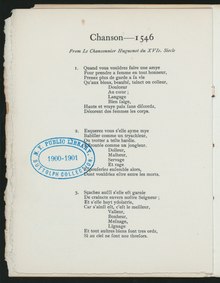
The Huguenot Society of America is a hereditary patriotic society, organized in New York City on April 12, 1883, and incorporated on June 12, 1885.

The Huguenot Society of America is a hereditary patriotic society, organized in New York City on April 12, 1883, and incorporated on June 12, 1885.
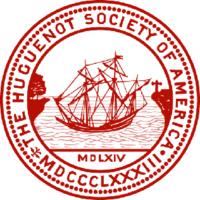
The Huguenot Society of America is a New York City–based genealogical organization. On April 12, 1883, the Society was inaugurated by a group of descendants of Huguenots who had fled persecution in France and who (or whose descendants) settled in what is now the United States of America. The purpose of the Society is primarily to promote the cause of religious freedom and to perpetuate the memory of the Huguenot settlers. Its first president was John Jay—lawyer, diplomat, abolitionist, and grandson of the first Chief Justice of the United States.
Today, the Huguenot Society of America has members in forty-three of the fifty States, the District of Columbia, Great Britain, Italy, and the Netherlands. The Society maintains an extensive library of books relating to Huguenot history; preserves pictures, sculptures, and artifacts relating to the Huguenots; presents lectures on topics of Huguenot interest; supports important research in Huguenot history; and gives annual scholarships to American Huguenot descendants attending selected colleges and universities. [1]
The Huguenot Society of America is sometimes confused with the similarly named but unaffiliated National Huguenot Society, which was founded in 1956.

The Huguenots were a religious group of French Protestants who held to the Reformed, or Calvinist, tradition of Protestantism. The term, which may be derived from the name of a Swiss political leader, the Genevan burgomaster Besançon Hugues (1491–1532), was in common use by the mid-16th century. Huguenot was frequently used in reference to those of the Reformed Church of France from the time of the Protestant Reformation. By contrast, the Protestant populations of eastern France, in Alsace, Moselle, and Montbéliard, were mainly Lutherans.
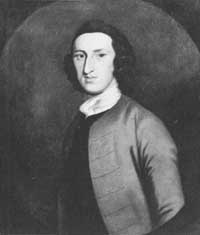
William Livingston was an American politician and lawyer who served as the first governor of New Jersey (1776–1790) during the American Revolutionary War. As a New Jersey representative in the Continental Congress, he signed the Continental Association and the United States Constitution. He is considered one of the Founding Fathers of the United States and a Founding Father of New Jersey.
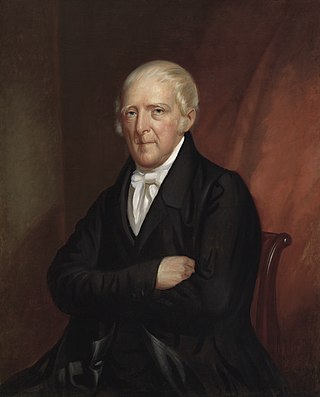
Col. John Stevens, III was an American lawyer, engineer, and inventor who constructed the first U.S. steam locomotive, first steam-powered ferry, and first U.S. commercial ferry service from his estate in Hoboken. He was influential in the creation of U.S. patent law.
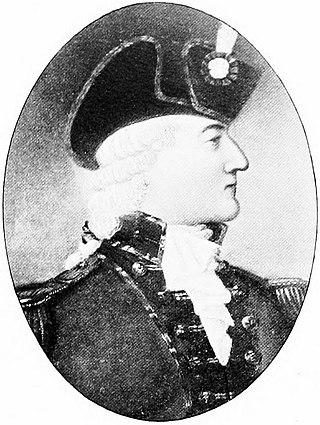
John Broome was an American merchant and politician who was Lieutenant Governor of New York, from 1804 to 1810.
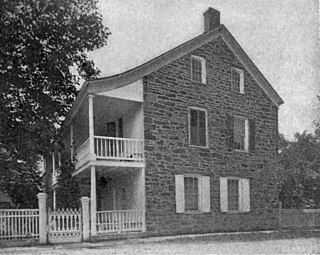
Louis Du Bois was a Huguenot colonist in New Netherland who, with two of his sons and nine other refugees, founded the town of New Paltz, New York. These Protestant refugees fled Catholic persecution in France, emigrating to the Rhenish Palatinate and then to New Netherland, where they settled in Wiltwyck and Nieuw Dorp (present-day Hurley, New York, settlements midway between New Amsterdam and Beverwyck before ultimately founding New Paltz.

The Knickerbocker Club is a gentlemen's club in New York City that was founded in 1871. It is considered to be the most exclusive club in the United States and one of the most aristocratic gentlemen's clubs in the world.
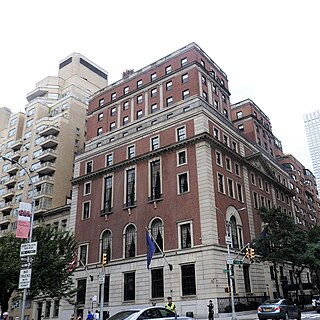
The Union League Club is a private social club in New York City that was founded in 1863 in affiliation with the Union League. Its fourth and current clubhouse is located at 38 East 37th Street on the corner of Park Avenue, in the Murray Hill neighborhood of Manhattan. It was designed by Benjamin Wistar Morris and opened on February 2, 1931. The building was designated a New York City landmark on October 25, 2011. The club is considered one of the most prestigious in New York City.
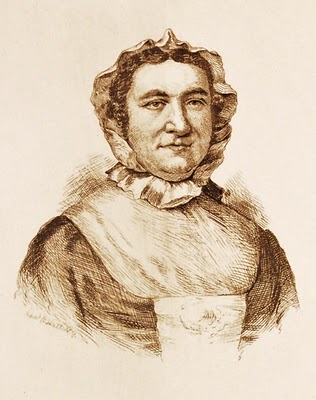
Mary Spratt Provoost Alexander was an influential colonial era merchant in New York City.
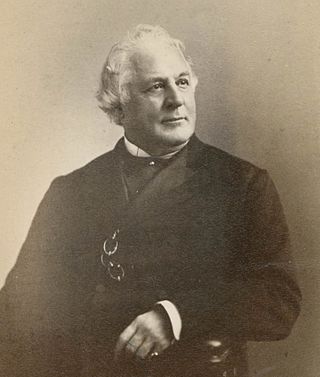
John Jay was an American lawyer and diplomat to Austria-Hungary, serving from 1869 to 1875. He was the son of William Jay and a grandson of John Jay, a former Chief Justice of the United States Supreme Court. Jay was active in the anti-slavery movement, elected president of the New York Young Men's Antislavery Society while still in college. He published several speeches and pamphlets on slavery and history, and was elected in 1889 as president of the American Historical Association.

The Huguenot Church, also called the French Huguenot Church or the French Protestant Church, is a Gothic Revival church located at 136 Church Street in Charleston, South Carolina. Built in 1844 and designed by architect Edward Brickell White, it is the oldest Gothic Revival church in South Carolina, and has been designated a National Historic Landmark and listed on the National Register of Historic Places. The congregation it serves traces its origins to the 1680s, and is the only independent Huguenot church in the United States.

William Jay was an American soldier and a lawyer. He served in the Union Army as a lieutenant colonel during the American Civil War. He served as the 40th President of the Saint Nicholas Society of the City of New York.

John Jay was an American statesman, patriot, diplomat, abolitionist, signatory of the Treaty of Paris, and a Founding Father of the United States. He served as the second governor of New York and the first chief justice of the United States. He directed U.S. foreign policy for much of the 1780s and was an important leader of the Federalist Party after the ratification of the United States Constitution in 1788.

The Jay Heritage Center (JHC) is a 501(c)(3) not-for-profit organization incorporated in 1990 and chartered by the New York State Board of Regents to act as stewards of the 23-acre Jay Estate, the National Historic Landmark home of American Founding Father John Jay. Jay's ancestral property in Rye, New York is considered the centerpiece of the Boston Post Road Historic District.

Peter Augustus Jay was a prominent New York lawyer, politician and the eldest son of Founding Father and first United States Chief Justice John Jay.
Events from the year 1791 in the United States.

Lewis Cass Ledyard was a New York City lawyer. He was a partner at the firm Carter Ledyard & Milburn, personal counsel to J.P. Morgan, and a president of the New York City Bar Association.
The Underhill Society of America is a non-profit family genealogical society that was organized in Brooklyn, New York, on June 16, 1892. The Society was incorporated in 1903. The purpose of the Underhill Society of America is to perpetuate the memory of Captain John Underhill and his descendants. Captain John Underhill was an important figure in Colonial America, having arrived from England in 1630 to form the colonial militia of the Massachusetts Bay Colony. He and his descendants served in important roles in American life from the military, to politics, business, finance, and industry.

Carlisle Norwood Jr. was an American lawyer.

Joseph Delafield was an American soldier, lawyer and diplomat.